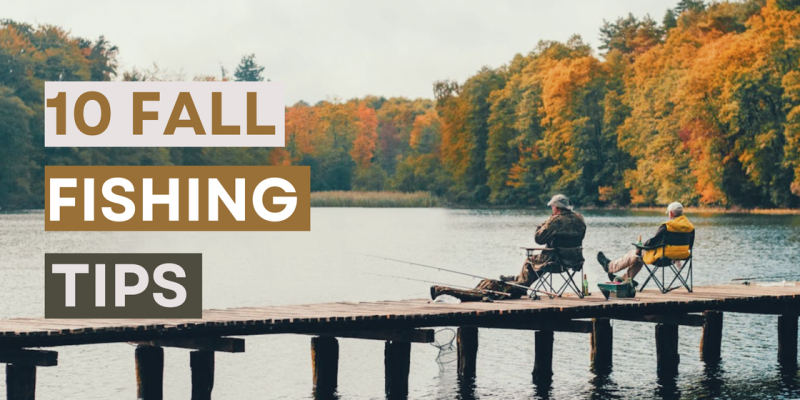Ready to make this fall your best fishing season yet? We’ve completely revamped our fall fishing guide.
While our 2024 guide focused on Florida’s seasonal transition, this year’s edition goes deeper with 10 data-driven tips that will help you find, identify, and catch more fish this autumn.
1. Know When Fall Fishing Season Really Begins

The season kicks off when water temperatures begin their steady decline.
According to experienced anglers, the prime fall bite typically begins when surface temps drop below 70°F in most regions, with peak action occurring as temperatures continue to fall into the 50s and 60s.
In northern states, this transition can happen as early as late August or early September. In southern regions, you might not see prime fall conditions until late October or even November. The key trigger is the first significant cooling trend that lasts several days.
Watch for these signs that fall fishing has begun:
- Leaves starting to change color along shorelines
- Nighttime temperatures consistently dropping into the 50s
- Baitfish schools becoming more active and visible
- Increased bird activity over the water
Your local fall fishing window could last anywhere from 6 to 12 weeks, so pay attention to nature’s signals rather than the calendar alone.
2. Target These Hot Fall Species

Bass (Largemouth and Smallmouth)
- They become extremely aggressive as they bulk up for winter according to Kubie Brown (themeateater.com). Bass move shallow during these temperatures, making them more accessible from shore or boat.
Walleye
- They prefer water temperatures between 55°F and 70°F, which is optimal for their metabolism and activity levels. As water temperatures cool below 70 degrees in fall, solid patterns develop.
Northern Pike and Muskie
- Known as absolute powerhouses in fall. Waterandwoodes.net states that muskies are most active in water temperatures between 55° and 72°, with pike and muskies feeding aggressively as waters cool. Once waters cool below 50 degrees, they become particularly aggressive hunters, though they rarely go in water shallower than 18 feet during the coldest periods.
Crappie
- They begin schooling up in fall, making them easier to locate once you find them. Crappie move to deeper structures and basins as temperatures drop, typically holding at 15-25 feet near brush piles, creek channels, and standing timber.
Trout (in stocked waters)
- Trout become more active as temperatures drop into their comfort zone. Many state wildlife agencies, like MDNR conduct fall trout stockings, which means fresh, eager fish hitting the water throughout the season.
3. Match Your Lures to Fall Feeding Patterns

As fish bulk up for winter, their feeding behavior changes dramatically. Here are proven lure selections for your target species:
Bass:
- Spinnerbaits (1/2 to 3/4 oz) in white, chartreuse, or shad patterns
- Crankbaits in crawfish and shad colors, diving 6-12 feet
- Jigs (3/8 to 1/2 oz) with creature baits in natural colors like green pumpkin or brown
- Swimbaits that mimic dying or injured baitfish
Walleye:
- Jigging spoons in silver and gold for vertical presentations
- Live bait rigs with minnows or nightcrawlers
- Crankbaits in perch and shad patterns
- Soft plastic paddle tails (3-4 inches) on jig heads
Pike and Muskie:
- Large spinnerbaits (1+ oz) with Colorado or willow leaf blades
- Jerkbaits (6-10 inches) in bright colors or natural patterns
- Bucktail spinners in white, black, or chartreuse
- Large soft plastic swimbaits for covering water
Crappie:
- Small jigs (1/16 to 1/8 oz) in white, chartreuse, or pink
- Tube baits (2 inches) in natural colors
- Small spinnerbaits with a slow retrieve
Trout:
- Inline spinners (size 1-3) in gold, silver, and copper
- Small spoons (1/8 to 1/4 oz) in bright colors
- PowerBait or dough baits for stocked trout
4. Upsize Your Baits as Temperatures Drop

Here’s a fall fishing secret many anglers miss: the colder the water gets, the larger your baits should become, even Mike Laconelli says so.
This supersizing strategy applies across most species and becomes increasingly important as water temperatures continue dropping.
5. Adjust Your Retrieve Speed to Water Temperature
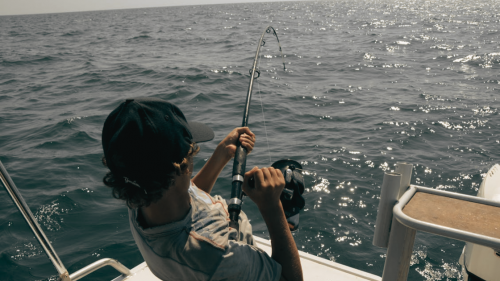
As fall progresses and water temperatures continue dropping, slow down your presentation accordingly.
Fish are cold-blooded, meaning their metabolism decreases with cooler water temperatures. They won’t chase fast-moving baits as readily as they did in summer’s warmth.
Start the fall season with moderate retrieves, then gradually slow down as weeks pass. By late fall, your retrieves should be noticeably slower, sometimes painfully slow compared to summer speeds. This applies to cranking, jigging, and even trolling speeds.
Don’t be afraid to mix up your speeds and experiment, but when in doubt, slow down.
6. Pay Attention to Baitfish Migration Patterns
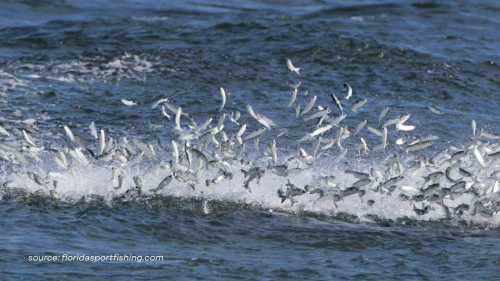
Professional angler Mike Iaconelli emphasizes as he explains, baitfish location and movement trumps nearly all other factors anglers typically consider during autumn:
“The fall is about BAITFISH!!! MATCH THE HATCH!!!”
In coastal bays, finger mullet gather near inlets as they prepare to enter the ocean and migrate south. On the other hand, tidal rivers, young-of-year glass minnows and menhaden move out of creeks and into river mouths. And in large reservoirs, shad often shift from creeks and feeder streams into the main lake where water temperatures are more stable.
Watch for birds diving and feeding because gulls, terns, and other birds will gather over schools of baitfish being pushed to the surface by feeding gamefish. When you see this surface activity, get there quickly and cast to the action.
7. Look for Warm Water Pockets on Sunny Days
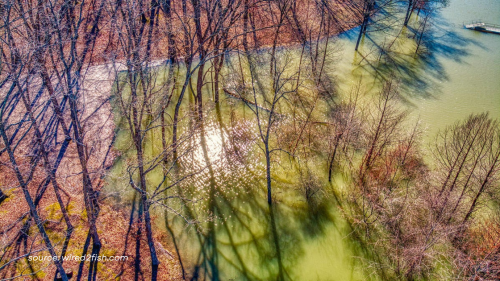
While fish don’t technically hibernate, many species do slow down significantly when waters grow cold. However, on warm, sunny fall days, they may seek out areas that warm faster and hold slightly higher temperatures than surrounding waters.
Prime warm-water pockets include:
- Shallow coves and flats with dark-colored bottoms that absorb sunlight
- Protected bays on the north side of lakes (more sun exposure)
- Areas with remaining green vegetation that hasn’t died off yet
- Rocky structures that absorb and radiate heat
- Shallow backwaters connected to main lakes
These spots can be several degrees warmer than surrounding waters, concentrating active, feeding fish. They’re especially productive during stable weather patterns following several sunny days.
8. Time Your Trips for Maximum Success
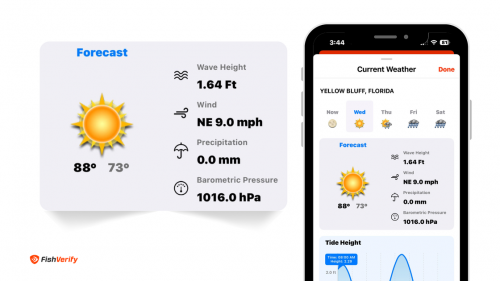
Fall fishing windows become more predictable than summer’s inconsistent patterns. Understanding the best times to be on the water will significantly improve your catch rates:
- Early Morning: First light through mid-morning offers excellent action as fish move shallow to feed in the warmest water of the day following cool nights.
- Late Afternoon: The last two hours of daylight see increased activity as fish make their evening feed before nightfall. Afternoon sun can trigger aggressive bites in shallow water.
- Overcast Days: Cloud cover can extend the bite throughout the day, especially for light-sensitive species like walleye and crappie that typically feed during low-light periods.
- Before Weather Fronts: Fish often feed aggressively 12-24 hours before a cold front arrives, sensing the change in barometric pressure. This pre-frontal feeding can produce exceptional catches.
- After Fronts Stabilize: While fishing typically slows immediately after a front passes, once conditions stabilize for a day or two, fish resume normal feeding patterns.
🎣 Use FishVerify’s weather and marine forecast tools to plan your trips around the most active fishing times, so you’re on the water when the bite is best!
9. Track Your Progress and Patterns
Fall patterns can shift fast , what works this week might not work the next. Keeping a detailed log of your catches helps you spot trends in species activity, bait performance, and weather conditions.
With FishVerify’s smart catch log, you automatically record every catch details, tagged with location, weather, tide, and moon phase data. You can look back next season and know exactly what triggered bites.
The more you log, the smarter your future trips become.
10. Stay Flexible and Keep Moving
Fall fish are on the move constantly, which means you should be too. If an area isn’t producing after 20-30 minutes, relocate and keep searching.
Cover water efficiently by:
- Making long casts and working back quickly with search baits
- Using fast-moving lures like spinnerbaits and crankbaits to locate active fish
- Hitting multiple spots rather than fishing one location thoroughly
- Paying attention to surface activity, birds, and other signs
- Adapting quickly when you find a productive pattern
Once you locate feeding fish, slow down and work the area more thoroughly. Fall fish often school up or concentrate in specific areas, so where you catch one, you’ll likely catch more.
Make Fall 2025 Your Best Season Yet!
Fall fishing offers some of the year’s most exciting and productive angling opportunities. With these 10 tips, you’re equipped to make the most of every outing this autumn.
The fish are feeding aggressively. Now get out there and catch them!
